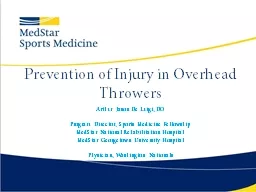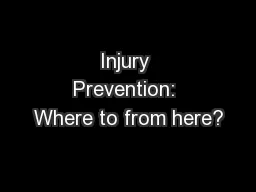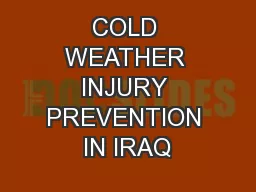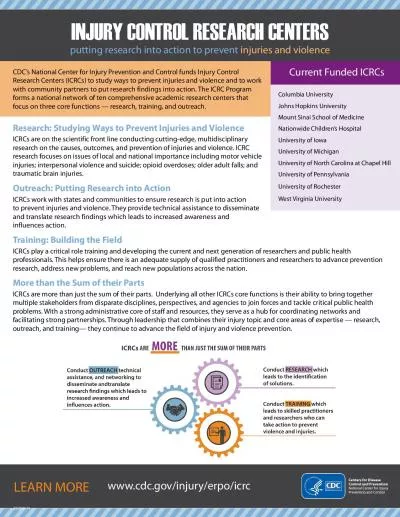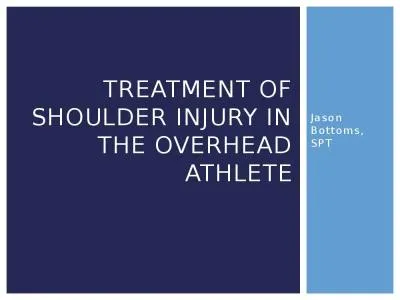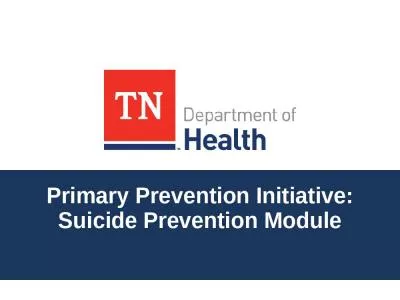PPT-Prevention of Injury in Overhead Throwers
Author : celsa-spraggs | Published Date : 2019-12-08
Prevention of Injury in Overhead Throwers Arthur Jason De Luigi DO Program Director Sports Medicine Fellowship MedStar National Rehabilitation Hospital MedStar Georgetown
Presentation Embed Code
Download Presentation
Download Presentation The PPT/PDF document "Prevention of Injury in Overhead Thrower..." is the property of its rightful owner. Permission is granted to download and print the materials on this website for personal, non-commercial use only, and to display it on your personal computer provided you do not modify the materials and that you retain all copyright notices contained in the materials. By downloading content from our website, you accept the terms of this agreement.
Prevention of Injury in Overhead Throwers: Transcript
Download Rules Of Document
"Prevention of Injury in Overhead Throwers"The content belongs to its owner. You may download and print it for personal use, without modification, and keep all copyright notices. By downloading, you agree to these terms.
Related Documents

